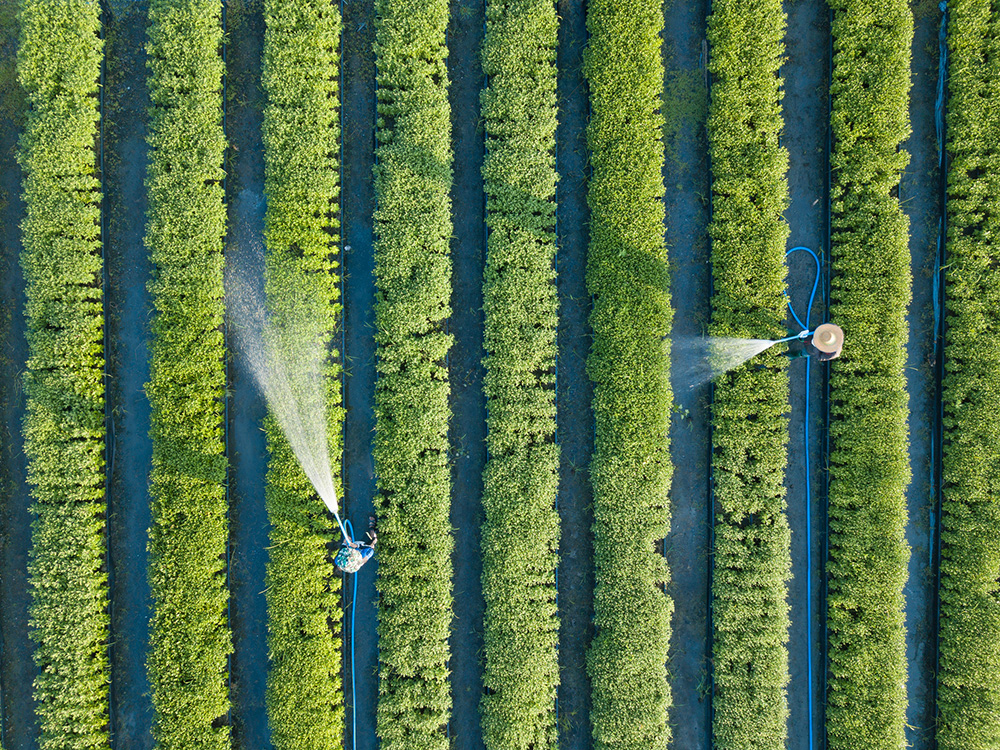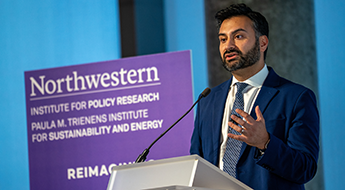Connecting Water and Food Insecurity
Sera Young argues if we care about food insecurity, we must pay attention to water insecurity
Get all our news
We can’t not pay attention to water these days, and the best way to understand the role of water is to measure it holistically and precisely.”
Sera Young
IPR anthropologist

The theme of this year’s World Food Day was “Water is life, water is food. Leave no one behind.”
The journal Nature Water commemorated the day on October 16 by hosting a webinar on what countries can do to better assess and monitor water insecurity alongside food insecurity. IPR anthropologist Sera Young was one of three featured speakers. World Food Day was created to recognize the founding of the United Nations’ Food and Agriculture Organization (FAO) in 1945 and its mission to achieve food security for all.
A few days earlier, Young and a group of colleagues, including Pablo Gaitán-Rossi of Universidad Iberoamericana who also spoke at the webinar and experts at the United Nations’ FAO, UN Nutrition, and IWMI, published a commentary in Nature Water. In it, they argue that World Food Day marks an occasion to measure and develop policy that “reflects the interconnectedness of water and food securities and nutrition.” They call for recognizing how food and water are connected, continuing to measure indicators of water security, and making lived experiences the focus of water policy.
During the webinar, Young discussed her work with colleagues developing the WISE Scales, a 12-question survey to measure water insecurity at both the household and individual level that was inspired by a similar and widely used measure for food insecurity. While doing research in Kenya on food insecurity early in her career, Young realized how intertwined food and water were.
“When we asked what shaped how they fed their infants, there were, to my great surprise, a lot of pictures of water,” she said.
This led to the creation of the WISE Scales in 2019, which have now been implemented in at least 48 countries by over 100 organizations, such as Gallup and UNICEF. The WISE Scales ask questions such as how often participants worried about not having enough water, how often they were unable to wash their hands, and how often they changed what they ate because of problems with water.
As Young has worked on the development and implementation of the WISE Scales, the link between water and food remains clear.
“Water insecurity is associated with two to three times higher odds of experiencing moderate-to-severe food insecurity,” Young said, citing evidence from her 2022 study examining 25 low-and middle-income countries, in conjunction with the UN Food and Agriculture Organization.
Kyle Davis of the University of Delaware spoke about the relationship between water and food, pointing out that water demand influences global food production, while water demand and scarcity are due to growing crops. He called this interaction a clear and deepening “tradeoff between water and food production.”
Gaitán-Rossi discussed efforts in Mexico to adopt the WISE Scale, such as in the state of Nuevo León during a drought in 2022. The state government added the WISE Scale to their own household survey to gather more granular data about the water crisis, and the data helped guide the government’s future responses, including distributing bottled water, creating community water tanks, and establishing a community hotline to report problems with water.
Young cited another example of a community using the WISE Scale in Walgett, Australia, to measure water insecurity in their homes. The data they collected revealed that Walgett’s water supply contains sodium levels that are 15 times higher than what medical officials recommend for long-term consumption by individuals with severe hypertension, or high blood pressure, and heart issues. After the mostly Aboriginal community published a press release about the findings, the story made national news and gained the attention of Australian policymakers. Nature also covered how the community used the WISE Scale as a policy tool.
“The case is not closed, but certainly there is progress happening, and the source of water has been changed thanks to this series of events,” Young said, pointing to community leaders’ efforts.
When asked about the connection between climate change and food and water insecurity, Young says climate change is going to bring further attention to the relationship between food and water insecurity. Her group has begun to explore how the relationship is mediated by climate zone.
“If climate change is the shark, then water is its teeth,” Young said, borrowing a quote from Andy Roby, a UK water security expert. “We can’t not pay attention to water these days, and the best way to understand the role of water is to measure it holistically and precisely.”
Watch the webinar hosted by Nature Water.
Sera Young is associate professor of anthropology and global health and an IPR fellow.
Photo credit: iStock
Published: October 24, 2023.


